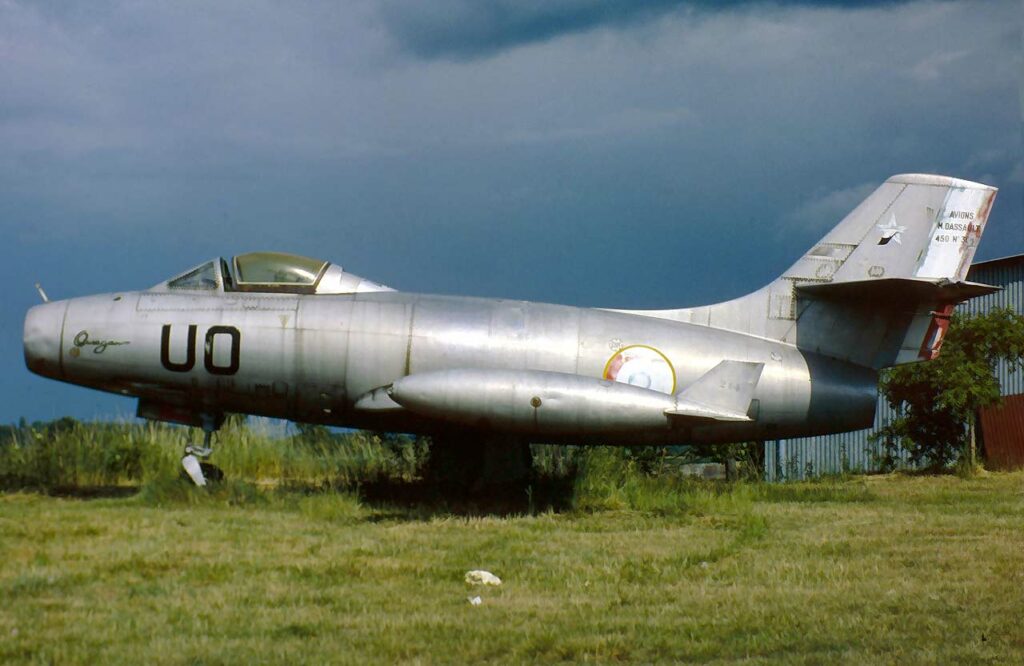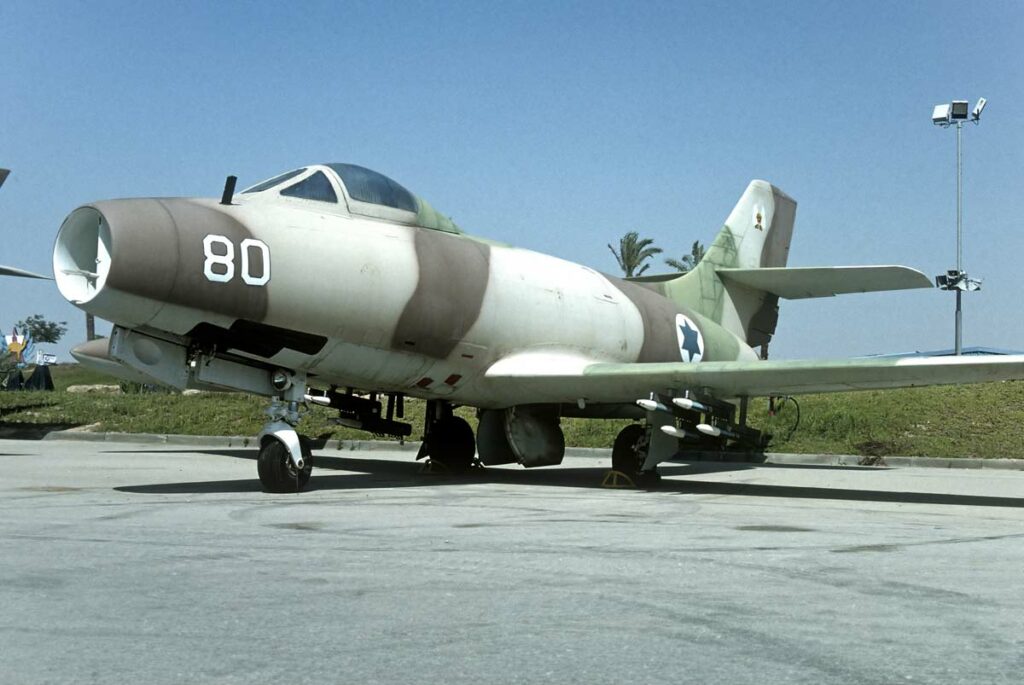The MD.450 Ouragan is France’s first indigenous post-war jet fighter, featuring a straightforward design and versatile performance.
In brief
The Dassault MD.450 Ouragan, also known as “Hurricane,” was France’s first successful post-WWII jet fighter, marking its re-entry into advanced aircraft design. Developed by Dassault Aviation in the late 1940s, it was a single-engine, straight-wing aircraft that combined simplicity with performance. Making its maiden flight on February 28, 1949, it served in various roles from fighter-bomber to trainer in several air forces worldwide. The Ouragan was known for its robust construction, ease of maintenance, and versatile operational capabilities, despite being overshadowed by more advanced contemporaneous aircraft later in its service life.
In the aftermath of World War II, France sought to rebuild its aviation industry and military capabilities. The Dassault MD.450 Ouragan was a manifestation of this effort, reflecting the nation’s ambition to regain its position as a leading aerospace innovator and military power.

History of the Development of the Dassault MD.450 Ouragan
The late 1940s was a period of rapid aviation advancement, with jet technology becoming the forefront of military power. France, keen on re-establishing its aeronautical industry and defense sovereignty, initiated several projects, with the MD.450 Ouragan being one of the most prominent.
Marcel Dassault, a preeminent figure in French aviation, led the development of the Ouragan. The project was launched to provide the French Air Force with a modern, jet-powered fighter that could perform various roles, from air defense to ground attack. The program was a blend of national ambition and practical design, aiming to create an aircraft that was effective yet relatively simple and cost-effective to produce and operate.
The Ouragan first flew on February 28, 1949. While it didn’t receive a specific NATO nickname, its service marked a significant step in post-war French aviation, bridging the gap between older propeller-driven aircraft and the next generation of jet fighters.
Design of the Dassault MD.450 Ouragan
The MD.450 Ouragan’s design was pragmatic, reflecting the immediate post-war era’s technological and economic realities. It featured a straightforward, straight-wing layout typical of early jet fighters, powered by a single Rolls-Royce Nene turbojet engine, later produced under license in France. The aircraft was approximately 10.73 meters long with a wingspan of 13.16 meters, reflecting its compact, efficient design.
The Ouragan’s advantages included robust construction, ease of maintenance, and operational versatility. However, its straight-wing design limited its speed and maneuverability compared to later swept-wing designs. Despite these limitations, the Ouragan was a capable platform that provided valuable service and paved the way for more advanced French aircraft.
Performance of the Dassault MD.450 Ouragan
The Ouragan’s performance was respectable for its time. It could reach a top speed of around 940 km/h (585 mph) and had a service ceiling of approximately 13,000 meters (42,650 feet). Its range was around 1,450 km (900 miles), suitable for various mission profiles.
While the Ouragan was outperformed by more advanced contemporaneous aircraft like the American F-86 Sabre or the Soviet MiG-15, it held its own within the context of France’s strategic needs and industrial capabilities. Its reliable performance and adaptability in multiple roles made it a valuable asset to the air forces that operated it.
Variants of the Dassault MD.450 Ouragan
The Ouragan saw several variants over its production life, each designed to improve upon the original’s capabilities or to fulfill specific roles. Key variants included the MD.450B, featuring improved avionics and armament; the MD.452 Mystère I and II, which were essentially transitional designs leading to the more advanced Mystère series; and various export versions tailored to the needs of foreign operators. Each variant incorporated lessons learned from operational experience, reflecting the aircraft’s evolutionary development.

Military Use and Combat of the Dassault MD.450 Ouragan
The Ouragan served primarily in the French Air Force and was exported to several countries, including Israel, India, and El Salvador. It saw combat in various conflicts, most notably during the Suez Crisis in 1956 with the Israeli Air Force and the Indo-Pakistani Wars with the Indian Air Force. Its roles included air superiority, ground attack, and training missions.
In combat, the Ouragan proved to be rugged and reliable. It faced various adversaries, from older prop-driven aircraft to more advanced jets. While it was eventually surpassed by newer designs, its service demonstrated the capabilities of French aviation and contributed to the operational experience that would inform future aircraft development.
The Dassault MD.450 Ouragan was more than just France’s first post-war jet fighter; it symbolized the nation’s recovery and determination to regain its stature in the world. While it may not have been the most advanced aircraft of its era, its development, operational service, and legacy are testament to the ingenuity and resilience of French engineering and strategic vision. The Ouragan laid the groundwork for France’s future successes in aviation and remains a significant chapter in the history of military aircraft.
Back to the Fighter Jet section.